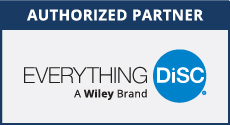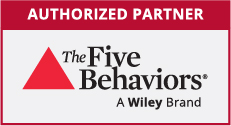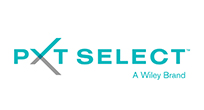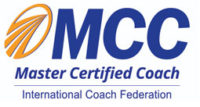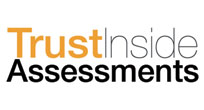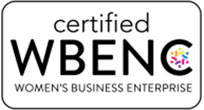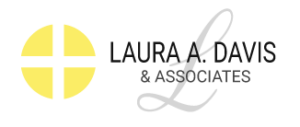March 10, 2010
People-Whispering Tip:
Many years ago I wrote a brochure about the business I was then about to start and still continually reinvent. Before taking additional coaching training and becoming a Master Certified Coach and before garnering deep experience through all these years of training and coaching sessions at all levels of all kinds of organizations in a wide variety of industries, I pretty much hit the nail on the head. My beginner’s mind self wrote something about “tailoring my services to your personal needs to serve as a catalyst in moving beyond limiting mindsets and behaviors that may be frustrating you now.”
I then went on to say that “through increased awareness and education, your organization can reap the financial rewards of enhanced creativity, accelerated decision-making, increased productivity and authentic communication.” My brochure went even further by saying “your organization is involved with leading-edge management practices, but is facing a challenge in “putting it altogether” and making it work. Leaders want to encourage customer focus, creativity, and innovation, but confusion exists about where to begin and how to proceed. Traditional structures, systems, and ways of thinking are barriers to implementing successful new strategies.”
Looking back on what I wrote some 15 or 16 years ago, I was wiser than I knew. I am writing this now not to convince you of that fact, but to remind you that you too, know what works and doesn’t work even if you haven’t been highly trained or have years of experience in a particular discipline. Intuition and common sense go a long way towards making a practical tangible difference in the world. I am not saying that experience isn’t valuable if it is guided by insight. I am saying that sometimes in our culture, we ignore the obvious and keep trying to justify behaviors and practices that no longer work in a particular environment. Sometimes we spend so much time proving what we already know intuitively that it becomes an excuse for making a change.
I am not immune to this tendency and love to read the case studies and results of “experiments” about human behavior. Specifically, in leadership development, organizational development, or talent management and development as well as in coaching of any kind, we are seeking to assist people in bringing out the best in themselves and others. There is an art and a science to such managerial “magic.” Certainly it is valuable to study what works as long as we are open to seeing things in new ways.
One of my favorite authors in this field is Daniel Pink, author of “A Whole New Mind” and his most recent book “Drive.” In “A Whole New Mind”, Pink’s central premise is that the future of a world rocked by technological change, globalization, and outsourcing requires a shift from a “left-brain” dominance to a more holistic even artistic skill set. As Dan Pink points out, the “left-brain” analytical capabilities that powered the Information Age are necessary, but are no longer sufficient. Instead, the capabilities we once disdained or thought frivolous – in short the “right-brain” qualities of inventiveness, empathy, joyfulness, and meaning – increasingly will determine who flourishes and who flounders in this century. Actually, this has always been true and yet calling it new sometimes gets peoples’ attention.
His recent book takes his paradigm-challenging pattern in a differing although tangentially related direction. While “A Whole New Mind” challenges what it takes to get ahead in the world today, “Drive” is a provocative look at what really motivates people to perform at their best or to do anything for that matter. He challenges the notion that the best way to motivate ourselves and others is with external rewards like money or other carrot and stick approaches. Instead, he cites scientific and anecdotal evidence which points to the true power of intrinsic motivation stemming from the deeply human need to direct our own lives, to learn and create new things, and to do better by ourselves and our world. I encourage you to watch his YouTube video on Ted.com
My intention here is not to sell you on Dan Pink and his ideas or books if that is what you are thinking. You might also be wondering, “what does this have to do with your first company brochure?” Well, both my brochure and Dan Pink are pointing to some fundamental keys to understanding human nature which are the tendency to hold onto self-limiting (and by extension organizationally- limiting) beliefs, premises, assumptions, mindsets, paradigms or whatever you want to call them because not doing so requires changing our minds and hearts and ultimately changing our behavior. Despite overwhelming evidence to the contrary as well as our own personal experience, many of us persist in thinking, feeling, and acting in direct opposition to what truth knows really works.
In this case, Pink exposes the mismatch between what science knows and what business does and how that affects every aspect of life. This fact has broader implications for us in every area of life in that we often know better intuitively (as I did all of these years ago) but we continue to act in the tried and true ways that once worked but no longer work in the current environment. This month, as Spring encourages us to clear out the cobwebs and reexamine our lives in business and elsewhere, what limiting beliefs, premises, assumptions, mindsets, paradigms and their associated practices do you need to let go of and replace with transformational thinking, feeling, and doing?
For assistance with that effort, call us at 404-327-6330 or email me at laura@lauraadavis.com. I would love to be of assistance to help you and your team and organization to retool your thinking to be ready for the new world of work.
DiSC Assessment Application:
Much has been written about the distinction between management and leadership over the years. I won’t be so bold as to presume I could summarize the difference in one small paragraph here. Nevertheless, I can point to the importance of a leader serving as one who inspires and incites others to positive, effective action. As I was thinking about how best to express this point and tie it to one of the product-based solutions I offer, I came across this quote by Napoleon Hill, author of the timeless classic “Think and Grow Rich.” Hill observes, “There is a mistaken idea floating around that a man should be paid for that which he knows. In reality, a man (or woman!) is paid for that which he does with what he knows, or that which he can get others to do with it.”
This month, I am reminded of the power of the DiSC Classic 2 Plus report (look under Products and Assessments at www.lauraadavis.com to purchase and to view a sample report) with its helpful information on how to manage and sell to others so you connect with who they are naturally as well as what they need most from you. As a manager, this assessment can assist you in knowing what strategies would be most effective when developing, “motivating,” complimenting, coaching, delegating, proving feedback, communicating with and assisting with the development of more effective decision-making approaches for any given individual.
From a sales management perspective, this tool can also help you to understand a person’s natural approach to selling at each stage of the selling process including planning, opening a call, interviewing, presenting, responding to concerns, gaining commitment, and servicing a customer or client team. By understanding a team members’ strengths and potential blind spots at each step of the sales cycle, you can be better prepared to support them in becoming more effective by building upon their strengths and mitigating their areas for growth and closing their developmental gaps.
For assistance in how to do this effectively, call us at (404) 327-6330 or email me at laura@lauraadavis.com.
Transformational Coaching Tip:
In the past few months, I’ve had the pleasure of sitting in on some client meetings in order to provide feedback as a prelude to setting up a coaching process together. It has struck me how frequently status meetings can become performance presentations where we try to look good in front of the big bosses rather than truly collaborate. There are systems reasons for this, time pressure reasons for this and most pervasive is the competitive trance we tend to operate under in big business today. There is a tendency to want to present things with a positive spin to avoid criticism or even public humiliation in some cases. After all, who wants to have their competence and reputation and even identity threatened in front of others who look up to and rely on them? What if instead of trying to dodge a bullet and putting on a false front, ALL participants in meetings behaved with total personal responsibility? What if all associates embodied a solution-focused attitude in group work that got things accomplished with ownership and authentic group power?
The following are some guidelines to ensure productive, effective meetings for any team at any level in any organization:
- Avoid any criticism, blame or defensiveness.
- Cooperate in finding solutions.
- Build on rather than criticize other people’s ideas – what I like about that is…technique.
- Allow others’ ideas to trigger new thought in you.
- Use humor to diffuse tensions and to inject creativity to any process.
- Sit quietly for a few minutes before the meeting to reflect on its purpose and the outcomes you want to achieve.
- Daily use the power of thought and visualization to see the larger purpose being unfolded, the purpose for the group’s being together.
For assistance in how to implement any of these ideas, feel free to call us at (404) 327-6330 or email me at Laura@lauraadavis.com.
It would be my pleasure to serve you!


